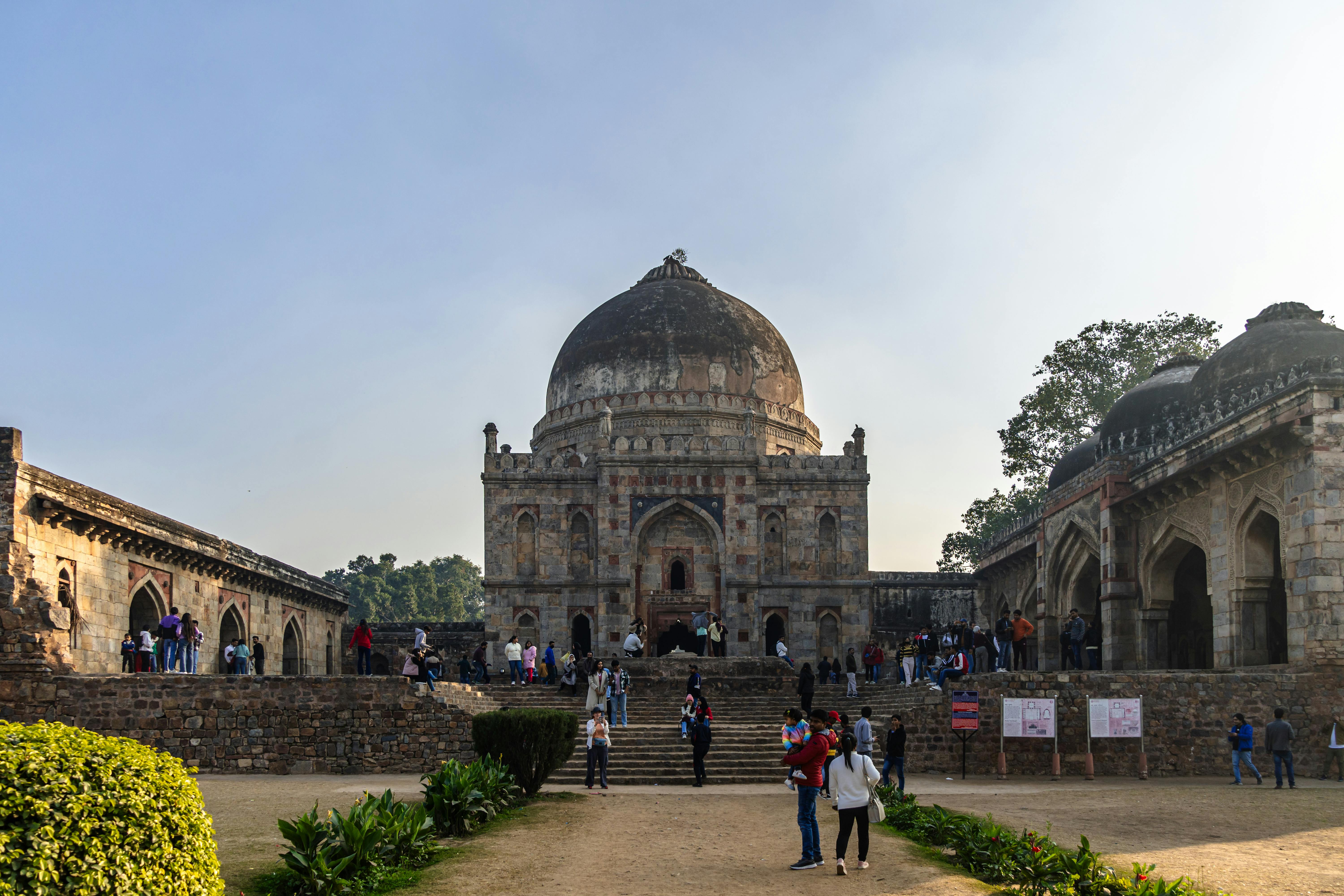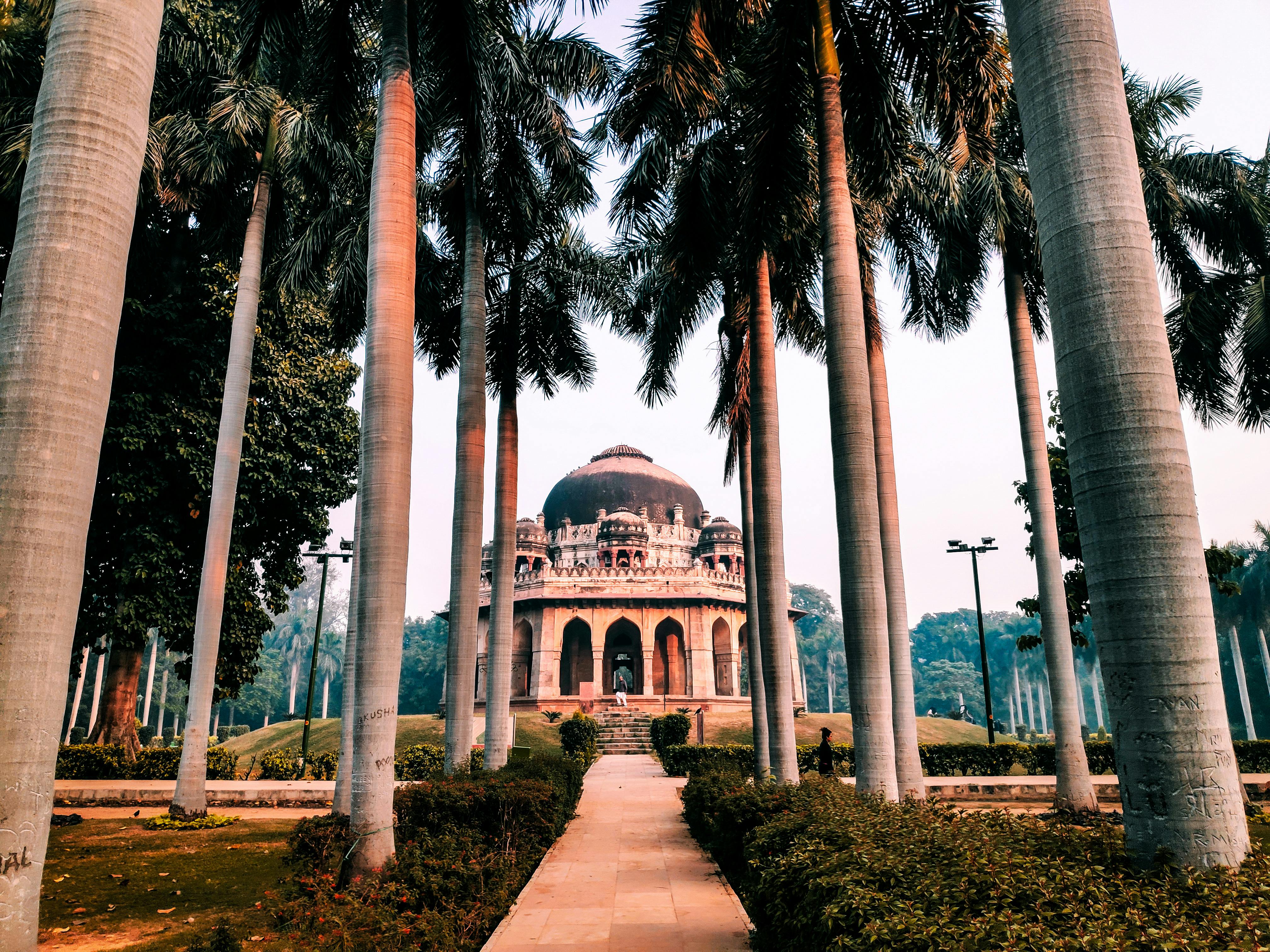

Lodhi Garden
Historical Significance
Why is it called Lodhi Garden?
Lodhi Garden derives its name from the Lodhi dynasty, the last rulers of the Delhi Sultanate before the Mughal conquest. The garden contains the tombs of Mohammed Shah and Sikander Lodhi, prominent rulers of this Afghan dynasty who governed northern India from 1451 to 1526.
Originally, this area was developed as a burial ground called "Bagh-i-Jud" during the 15th and 16th centuries. Later home to a village called Khairpur, it was cleared in 1936 during British-era redevelopment to create the "Lady Willingdon Park", named after the wife of the then Governor-General of India.
After India gained independence in 1947, it was renamed Lodhi Garden to honor its historical connection to the Lodhi dynasty.
What makes it an important site to visit?
Architectural Evolution
The monuments within Lodhi Garden represent a crucial transitional period in Indo-Islamic architecture - they showcase the evolution from the austere style of the Delhi Sultanate to the more ornate and refined Mughal aesthetic that would later flourish at sites like Humayun's Tomb and the Taj Mahal.
Historical Continuity
Few places in Delhi offer such a concentrated display of structures spanning multiple centuries and dynasties. The garden provides a physical timeline of Delhi's history, allowing visitors to witness the architectural progression from the 15th to the 20th century in one location.
Ecological Significance
Beyond its historical monuments, Lodhi Garden serves as a biodiversity hotspot in urban Delhi. The carefully preserved green space hosts over 100 species of birds, numerous butterfly varieties, and a diverse range of indigenous plants - making it a living laboratory for nature enthusiasts.
Cultural Importance
The garden has been integrated into Delhi's contemporary cultural fabric, serving as a space for morning yoga, evening walks, cultural performances, and photography exhibitions. It represents the harmonious coexistence of heritage conservation and modern recreation.
What can I expect to see inside the Garden?
Lodhi Garden houses several architectural marvels that showcase the rich history of the Delhi Sultanate period
Mohammed Shah's Tomb (1444 CE)
This octagonal tomb belongs to Mohammed Shah, the third ruler of the Sayyid dynasty. The structure features distinct architectural elements including an octagonal chamber, verandahs with pillars, and mihrabs (prayer niches) inside the western wall.
Bara Gumbad Complex (1490 CE)
The "Big Dome" is one of the most imposing structures in the garden. Interestingly, it doesn't house any graves and may have served as a gateway to the attached mosque. The complex includes a mosque and a mehman khana (guest house), both adorned with intricate inscriptions from the Quran and decorative blue tiles that hint at Persian influence.
Sheesh Gumbad (Early 16th Century)
Named for its once-glittering blue tiles ("sheesh" means glass or mirror), this tomb is believed to house the remains of an unknown family related to the Lodhi dynasty. The interior contains beautiful incised plaster decorations with Quranic inscriptions and geometric patterns.
Sikander Lodhi's Tomb (1517 CE)
Built by his son Ibrahim Lodhi, this tomb honors the second ruler of the Lodhi dynasty. It stands within a walled enclosure accessed through an impressive gateway. The architectural style, with its sloping walls and minimal decoration, represents the warrior-like austerity of the Afghan Lodhis.
Athpula Bridge
Dating to the later Mughal period during Akbar's reign, this seven-arched ("ath" means eight, "pula" means bridge) structure spans a stream within the garden. It demonstrates the continuation of architectural development at this site beyond the Lodhi period.
Archaeological Remains
Throughout the garden, visitors can spot smaller monuments, watercourses, and bridges that formed part of the original landscape. Some sections reveal older layers of Delhi's history, including stone pillars and sculptures from pre-Islamic periods.
Conservatories
Lodhi Garden is home to several specialized conservation areas that showcase Delhi's commitment to biodiversity preservation. The National Bonsai Park displays a remarkable collection of meticulously cultivated miniature trees. Visitors can also explore the Herbal Garden with its medicinal and aromatic plants, the Rose Garden featuring numerous varieties, and the Butterfly Park designed to attract and protect these delicate pollinators. Near the Athpula, one can also find a Duck House for various waterfowl.
More in the Lodhi Garden series




